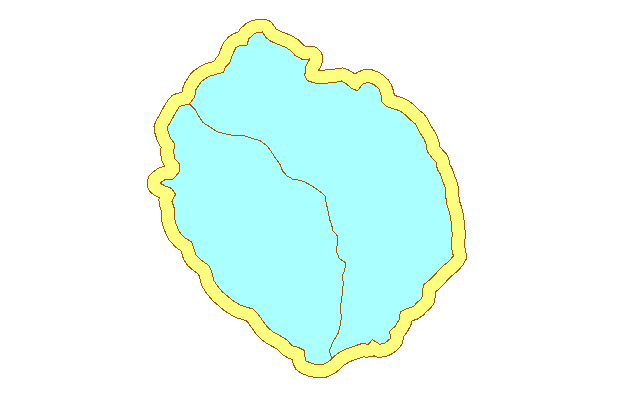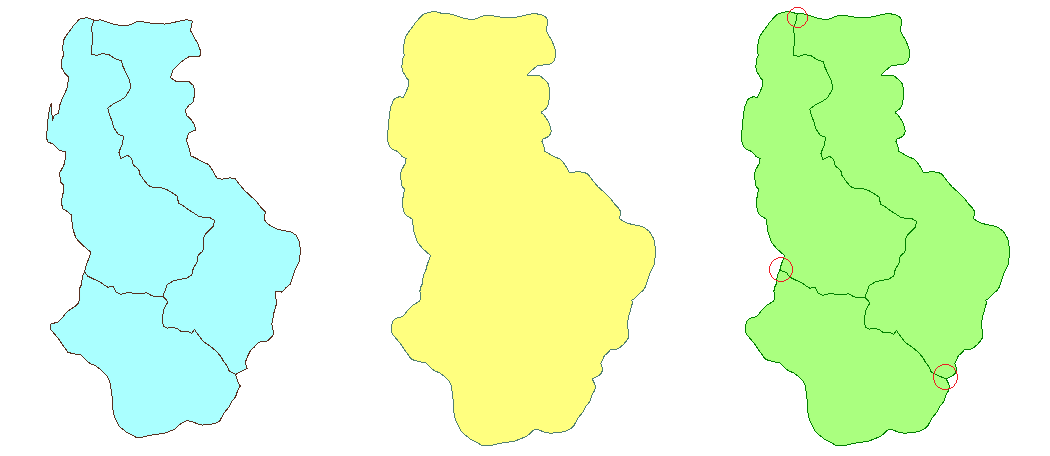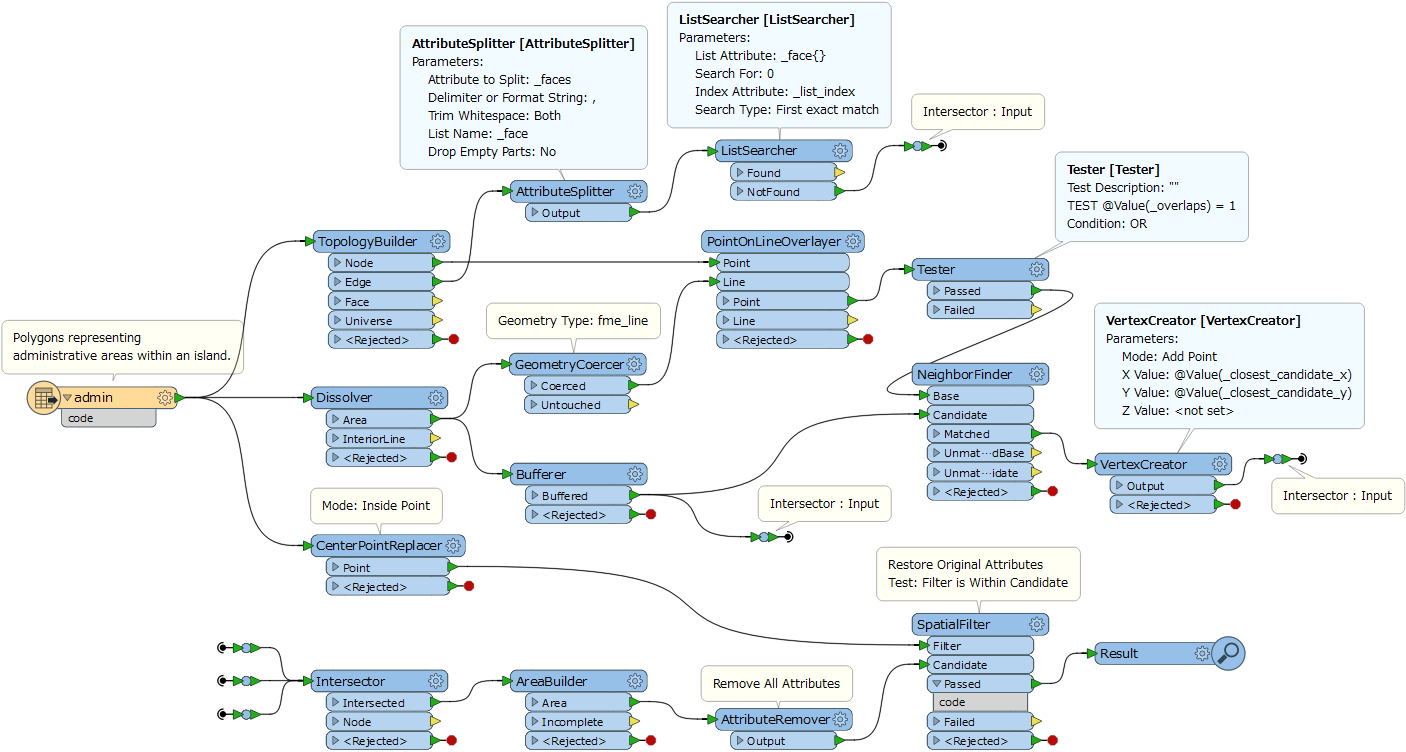Hi I am trying to add a 30m buffer around the coastline. See the attached file. Unfortunately with the buffer tool I am not getting the results I want. It buffers all the polygons so I get overlaps between polygons. I've tried a few things but not getting the right results ie. area on area but this is not working for me as all I get is all the overlapping bits
 +3
+3
buffer.png attached is a sample area of what I am trying to buffer
Sorry, the resolution of your image is low, cannot see what's wrong and/or what's right...
Do you need to make a donut area surrounding the input polygons, like this yellow area surrounding the light blue polygons?

 +3
+3
capture.jpg Hi Takashi I've almost got it but need to figure out how to get rid of the end cap holes
If you need to create the yellow area containing the light blue polygons shown in my screenshot, consider using the Dissolver to combine the buffer areas into a single polygon.
 +3
+3
Sorry, the resolution of your image is low, cannot see what's wrong and/or what's right...
Do you need to make a donut area surrounding the input polygons, like this yellow area surrounding the light blue polygons?

 +3
+3
why not buffer all (or dissolve all and then buffer) and then clip the dissolved buffer with the objects you used buffer on??
ah,flashback! I did this for all is Norway with FME years ago. Found the PDF, if you want, just contact me and I'll try to find the workspace and send it to you. Pdf here https://dataflow.center/wp-content/uploads/Buffering_the_coast_of_Norway_Sigbjorn_Tillerli_Herstad_NORKART.pdf&ved;=0ahUKEwjG8pKCspPTAhXBDZoKHTpBBE0QFggaMAA&usg;=AFQjCNHqFCQ6-NIZ2c8Je0WMVpjXzZVprg&sig2;=u0qZQJS65I7cDVY-hLvQiQ" target="_blank">https://www.google.no/url?sa=t&source;=web&rct;=j&url;=https://dataflow.center/wp-content/uploads/Buffering_the_coast_of_Norway_Sigbjorn_Tillerli_Herstad_NORKART.pdf&ved;=0ahUKEwjG8pKCspPTAhXBDZoKHTpBBE0QFggaMAA&usg;=AFQjCNHqFCQ6-NIZ2c8Je0WMVpjXzZVprg&sig2;=u0qZQJS65I7cDVY-hLvQiQ
If you need to create multiple buffer areas (right) corresponding to each original polygon (left) rather than a single merged buffer area (middle), you will have to define how the new boundaries on the expanded areas should be created.

For example, if the boundary can be defined as a straight line connecting between the end point of the boundary of the original polygons and the closest point on the outer boundary of the merged buffer, this workflow does the trick: buffer-coastline.fmwt (FME 2017.0)

Reply
Enter your username or e-mail address. We'll send you an e-mail with instructions to reset your password.



